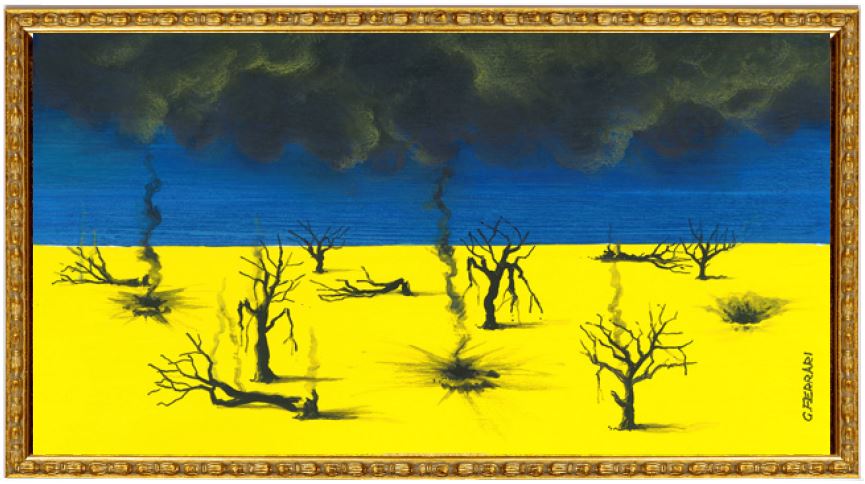Ukraine: Still life
Publish date 10-11-2023
Last July, President Mattarella said: «We need lawyers with good causes, able to face the challenges that concern the survival of humanity as a whole. Eschewing the logic of conflict and the emergence, as in the recent Russian aggression towards the independence of Ukraine, of pressures towards military confrontation that distract enormous resources necessary for human development".
The Russian invasion of Ukraine is causing an enormous number of deaths, continuous violations of human rights, forced deportations, especially of children, continuous waves of migration, torture, interruptions of essential services which lead to deaths and illnesses. But there is always a third face of sustainability: the environment. We talk about "ecocide", because the environment is devastated in every dimension. As former UN secretary Ban Ki Moon said in 2014: "The environment is often a silent victim of war." Ukraine occupies 6% of European territory, with 35% of the European biosphere. The data from the first post-invasion reports are continuously updated: there is talk of over 2,000 serious environmental damages recorded in Ukraine, 15 thousand hectares of crops devastated due to mines, exploded and unexploded ammunition, due to the passage of heavy vehicles and tanks, due to battles on the field (at least 5 out of 100 bombs remain on the ground). Over 30% of forests are damaged. Unfortunately, these are only approximations. The war is also taking place in a territory where there were industrialized areas polluted by Russian heavy industry which has left a disastrous legacy. Russian bombings are causing toxic clouds containing ammonia, dioxins, carbon monoxide, white phosphorus and many other toxic substances that pollute the soil and the urban environment.
No one is able, while the war is underway, to provide precise numbers, to monitor the environmental parameters in the field and to imagine how long the damage will last once the war is over. The fighting has caused and is causing fires, contamination of habitats, pollution of environmental matrices - water, air, soil. We can speak of lasting pollution due to the heavy metals present in ammunition and military devices (sulfur and copper, depleted uranium, nickel).
The panorama is desolate: polluted aquifers, destroyed forests, exterminated animal species, areas devoured by fires, rubble with remains and asbestos dust which abounds in buildings scattered throughout the environment, decommissioning of purification plants and sewers. Weapon systems such as the thermo-baric warheads used by the Russians create a thick fog of combustible liquid on the target, which when it explodes destroys an area of at least 8 hectares (16 football fields). The high temperatures of the explosions destroy soil microorganisms. Devastated fertile soil cannot be restored in "human" times (in fact, it takes hundreds of years to regenerate), while the food sustainability of dozens of countries around the world today depends on Ukrainian soil and its production.
It may seem strange to talk about flora and fauna in the face of the massacre of hundreds of thousands of people, but it must be done. There are at least 600 animal species directly threatened by war such as dolphins and cetaceans due to military ships and marine bombings: the Eurasian brown bear; the Eurasian lynx; the European bison. And much more. The environment must not be considered as a "side effect", it must be a central theme of action and reflection both in times of war and peace. At the UN there are developments on the principles for the protection of the environment in relation to armed conflicts (see the International Law Commission) with a new proposal for a legal definition of "ecocide", which could open up the possibility of prosecuting environmental crimes during armed conflicts. In Ukraine, aggression has certainly already violated all universal principles of international environmental law.
Carlo Degiacomi
NP October 2023








